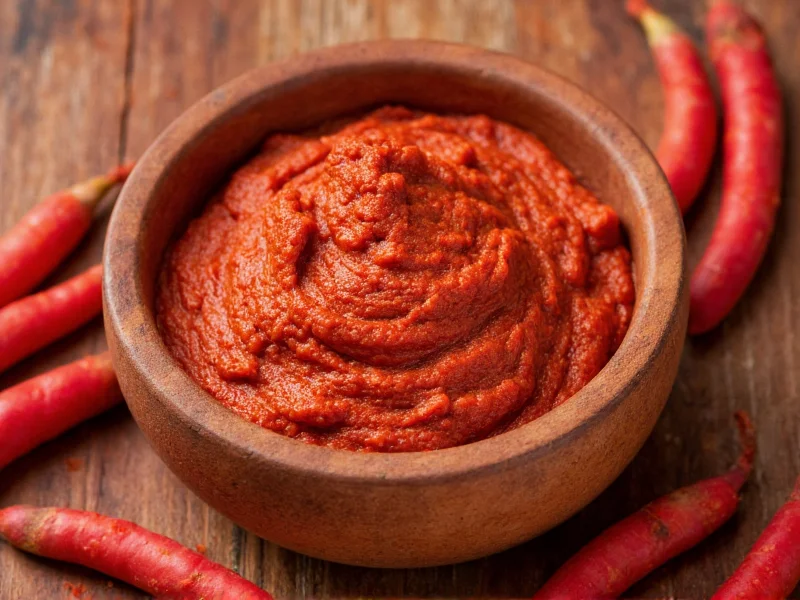For centuries, indigenous communities across Central and South America have utilized annatto seeds for culinary, medicinal, and ceremonial purposes. The transition from traditional preparation to modern organic achiote paste represents both cultural preservation and contemporary food safety standards. Understanding this versatile ingredient requires examining its composition, applications, and proper usage techniques.
What Exactly Is Achiote?
Achiote originates from the seeds of the Bixa orellana plant, a tropical shrub native to the Amazon basin. These triangular seeds contain bixin, the compound responsible for achiote's distinctive orange-red pigment. When processed into paste form, the seeds are ground with complementary ingredients that enhance both preservation and flavor complexity.
Organic vs. Conventional Achiote Paste: Key Differences
The primary distinction between organic and conventional achiote paste lies in agricultural practices and ingredient sourcing. Organic certification requires:
| Characteristic | Organic Achiote Paste | Conventional Achiote Paste |
|---|---|---|
| Seed Cultivation | Grown without synthetic pesticides or fertilizers | Potentially treated with agricultural chemicals |
| Additional Ingredients | Organic spices, vinegars, and citrus | May contain non-organic additives |
| Processing Methods | Avoids synthetic processing aids | May use chemical solvents |
| Certification | Bears official organic certification seal | No third-party verification of farming practices |
Nutritional Profile and Potential Health Benefits
While primarily used as a seasoning rather than a nutritional supplement, organic achiote paste offers several beneficial compounds. Annatto seeds contain antioxidants including bixin and norbixin, which research suggests may have anti-inflammatory properties. The organic preparation method preserves these compounds without introducing potentially harmful residues.
Traditional medicinal applications across Latin America have utilized achiote for digestive support and skin health, though modern scientific validation of these uses remains limited. When incorporated as part of a balanced diet, organic achiote paste provides natural coloring without the artificial dyes found in many commercial food products.
Culinary Applications Across Global Cuisines
Organic achiote paste serves as a foundational ingredient in numerous traditional dishes:
- Mexican cuisine: Essential for cochinita pibil (Yucatan-style pulled pork), where it combines with sour orange juice and spices
- Caribbean cooking: Used in Jamaican jerk seasoning blends and Puerto Rican pasteles
- Central American dishes: Features in Nicaraguan vigorón and Salvadoran pupusas
- Filipino recipes: Appears in dishes like bistek tagalog as both colorant and flavor enhancer
The paste's versatility extends beyond traditional applications. Modern chefs incorporate organic achiote paste into marinades for fish, rubs for roasted vegetables, and even as a natural coloring agent for homemade cheeses.
Creating Authentic Organic Achiote Paste at Home
Producing high-quality organic achiote paste requires attention to ingredient ratios and preparation techniques. Here's a reliable method for homemade preparation:
- Gather 2 tablespoons organic annatto seeds, 3 cloves organic garlic, 1 teaspoon organic cumin, 1 teaspoon organic oregano, 2 tablespoons organic white vinegar, and 2 tablespoons organic orange juice
- Toast annatto seeds in a dry skillet over medium heat for 2-3 minutes until fragrant
- Transfer seeds to a blender with remaining ingredients
- Blend until smooth, adding water only if necessary to achieve paste consistency
- Store in an airtight container in the refrigerator for up to two weeks
For optimal flavor development, allow the paste to rest for 24 hours before use. This resting period enables the flavors to meld and the natural oils to fully integrate.
Proper Storage Techniques for Maximum Freshness
Preserving the quality of organic achiote paste requires proper storage methods. When refrigerated in an airtight container, homemade paste maintains peak quality for 10-14 days. For extended storage, freeze the paste in ice cube trays, then transfer the frozen cubes to freezer bags for up to six months.
Commercial organic achiote paste typically includes natural preservatives that extend shelf life. Always check the "best by" date and store according to package instructions. Once opened, refrigeration is essential regardless of the product's initial storage requirements.
Signature Recipes Featuring Organic Achiote Paste
Integrating organic achiote paste into your cooking repertoire opens numerous culinary possibilities. Consider these authentic applications:
Yucatan-Style Chicken (Pollo Pibil)
Marinate chicken pieces in a mixture of organic achiote paste, sour orange juice, and habanero peppers for at least four hours. Wrap in banana leaves and bake until tender. The organic preparation enhances the dish's earthy notes while avoiding potential chemical residues.
Organic Achiote Rice
Sauté one tablespoon organic achiote paste with onions and garlic before adding rice and broth. The result is vibrant, flavorful rice that serves as an excellent accompaniment to grilled meats or fish. This simple technique transforms ordinary rice into a visually striking and aromatic side dish.
Common Substitutions When Organic Achiote Paste Is Unavailable
While nothing perfectly replicates achiote's unique flavor profile, several alternatives can provide similar color and approximate taste:
- Paprika combined with a pinch of saffron for color (though flavor differs significantly)
- Turmeric with a touch of cayenne for color and mild heat
- Annatto oil (made by infusing oil with annatto seeds) for color without paste texture
These substitutes work best when the primary need is color rather than authentic flavor. For traditional recipes where achiote is central to the dish's identity, seeking out authentic organic achiote paste yields superior results.
Understanding Quality Indicators in Organic Achiote Paste
When selecting commercial organic achiote paste, look for these quality markers:
- Certification seals from recognized organic authorities (USDA Organic, EU Organic, etc.)
- Simple ingredient lists without artificial preservatives or colors
- Vibrant orange-red color without brownish discoloration
- Consistent texture without separation or excessive oiliness
High-quality organic achiote paste should have a balanced earthy flavor with subtle peppery notes, not bitterness or off-flavors that indicate poor processing or stale ingredients.











 浙公网安备
33010002000092号
浙公网安备
33010002000092号 浙B2-20120091-4
浙B2-20120091-4